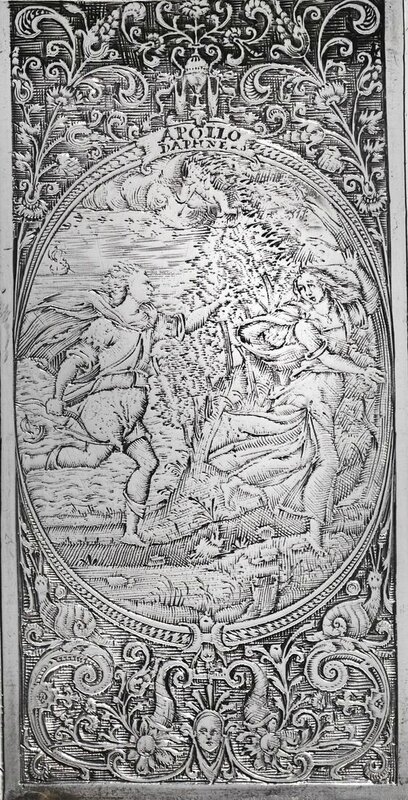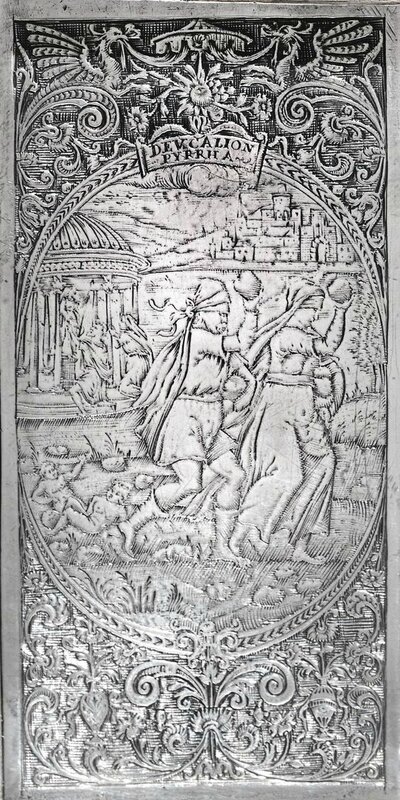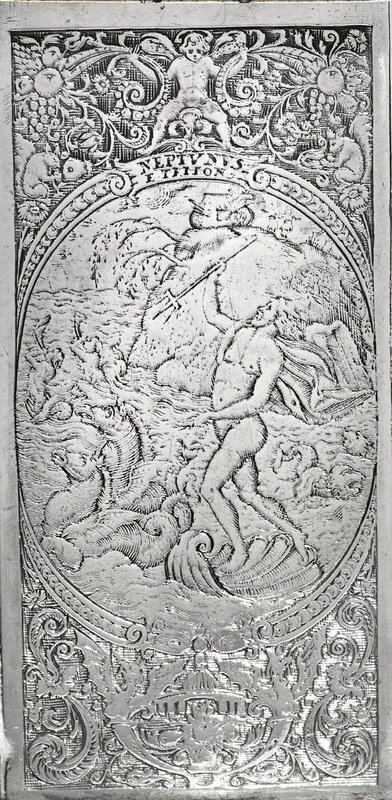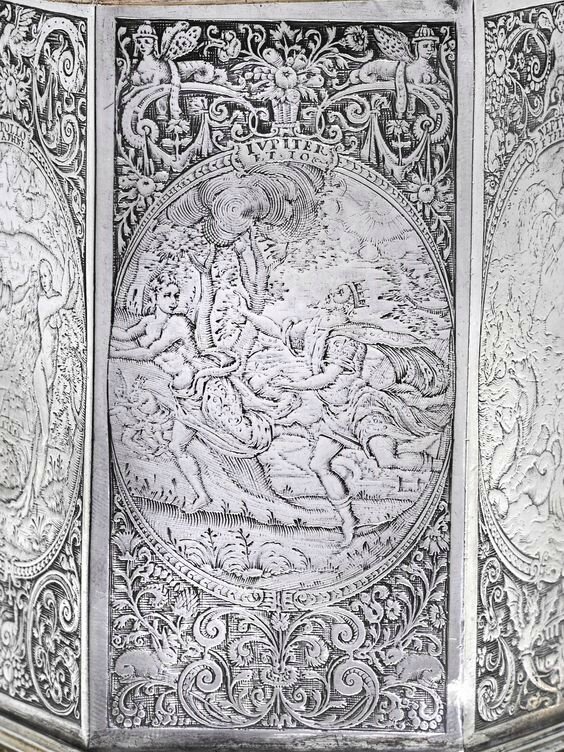A German parcel-gilt silver standing salt, maker's mark probably VG conjoined, Frankenthal, circa 1600
Lot 711. A German parcel-gilt silver standing salt, maker's mark probably VG conjoined, Guillaume or Gabriel van den Velden, Frankenthal, circa 1600. Estimate 40,000 — 60,000 GBP. Lot sold 50,000 GBP. Photo: Sotheby's.
Provenance: S.J Phillips, London, 1952
The Joseph R Ritman Collection, Sotheby's Geneva, 16 May 1995, lot 80
Belgian private collection
Exhibited: View Eeuwen Zilver, Gemeentemuseum, The Hague, 18 July-15 September 1952, cat no. 474
Literature: J. W Frederiks, Dutch Silver, Vol. II, The Hague, 1960, p. 62, no. 176
Dr Beatrice Jansen, 'Een Zilveren Zoutvat meet vorstellingen uit Ovidius' from Mededelingen van de dienst voor Schone Kunsten der Gemeente 's Gravenhage, 1954, pp.58-62, illustrated
Associated Literature: Walter Schmidt, 'Frankenthal Goldschmiedemarken,: Neue Forschungsergebnisse', in Weltkunst, vol 21, 1 November 1997, pp.2340-2341
Note: An engraved beaker, circa 1600, by this goldsmith is in the Erkenbert-Museum, Frankenthal (inv. no. 229). A smaller pair of hexagonal salts by the Frankenthal goldsmith Peter van Ixem, from the Rothschild and Rosebery collections, was sold at Sotheby's London, 11 February 1999, lot 50. Before the marks were identified a number of writers have considered this salt to be by a Netherlandish goldsmith from Amsterdam or Utrecht. Silver from Frankenthal had been heavily influenced by Dutch and Flemish silver from the 16th century when the town was given by the elector Palatine Frederick III as a refuge to protestant evangelicals from the Netherlands. In a portrait of a goldsmith, circa 1630, by the Dutch artist Thomas de Keyser, the sitter thought to be Christian van Vianen or Sijmon Valckenaer, is depicted holding a similar salt. (see detail).
Thomas de Keyser, Portrait of a silversmith, probably Christian van Vianen (1600-67) © Sotheby’s.
The standing salt was an essential element of the formal dining table until the mid 17th century; the most important examples being placed next to the principal diner and marking the spot above or below which the guests were seated according to rank. The present salt is decorated with fashionable scenes based on stories told by the Roman poet, Ovid, in the Metamorphosis. Dr. Jansen (op.cit.) has identified the Deucalion and Pyrrha and pursuits of Daphne scenes, to be after Virgil Solis's interpretations published in Frankfurt a.M. in 1563, while the other scenes are based on the Antwerp master Peter van der Borcht, whose illustrations of Ovid's stories were published by Jan Mordus in Antwerp in 1591. In turn these two artists were influenced by Bernard Solomon's Les Métamorphoses d'Ovide, published in Lyons, in 1557, which Dr. Jansen points out was the inspiration behind most 16th and 17th century illustrations of the subject.
Sotheby's. From Earth to Fire, London, 01 Nov 2017

/https%3A%2F%2Fprofilepics.canalblog.com%2Fprofilepics%2F1%2F0%2F100183.jpg)
/https%3A%2F%2Fstorage.canalblog.com%2F03%2F02%2F119589%2F96711876_o.jpg)
/https%3A%2F%2Fstorage.canalblog.com%2F11%2F31%2F119589%2F94773502_o.jpg)
/https%3A%2F%2Fstorage.canalblog.com%2F20%2F83%2F119589%2F94772815_o.jpg)
/https%3A%2F%2Fstorage.canalblog.com%2F26%2F72%2F119589%2F75604929_o.jpg)
/https%3A%2F%2Fstorage.canalblog.com%2F59%2F60%2F119589%2F26458628_o.jpg)










/http%3A%2F%2Fstorage.canalblog.com%2F15%2F58%2F119589%2F29888219_o.jpg)
/http%3A%2F%2Fstorage.canalblog.com%2F06%2F72%2F119589%2F129500034_o.jpg)
/http%3A%2F%2Fstorage.canalblog.com%2F39%2F61%2F119589%2F128357725_o.jpg)
/http%3A%2F%2Fstorage.canalblog.com%2F80%2F99%2F119589%2F126233273_o.jpg)